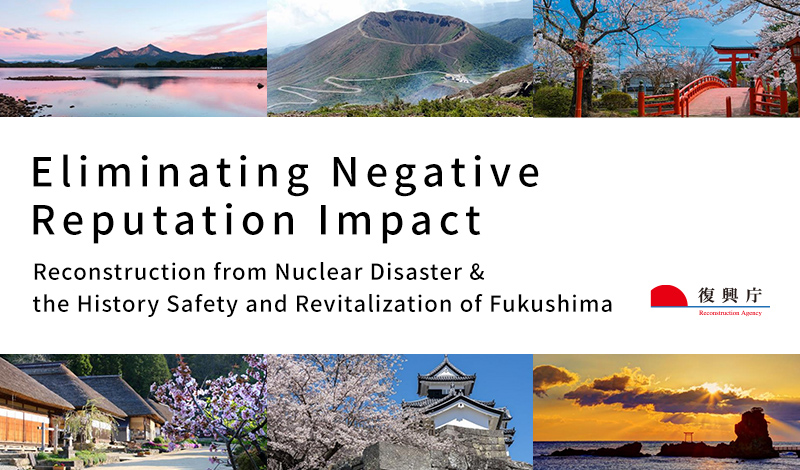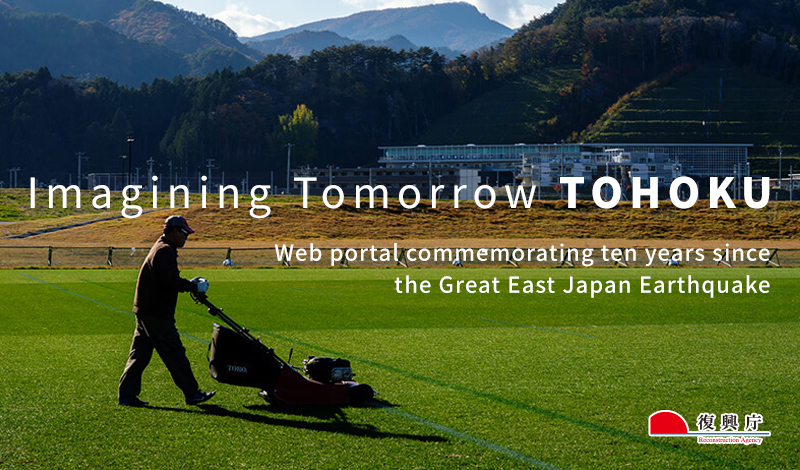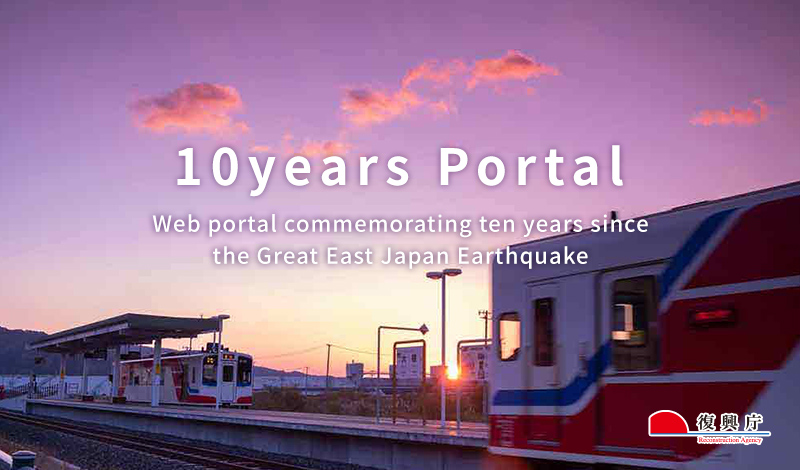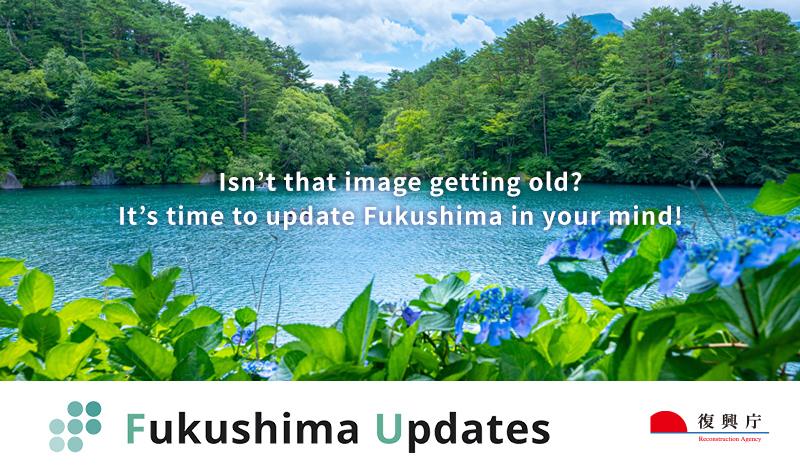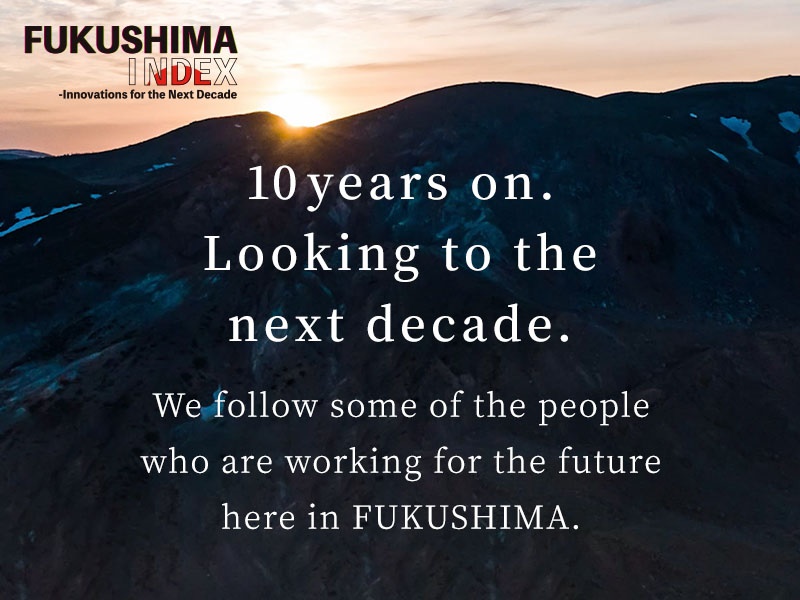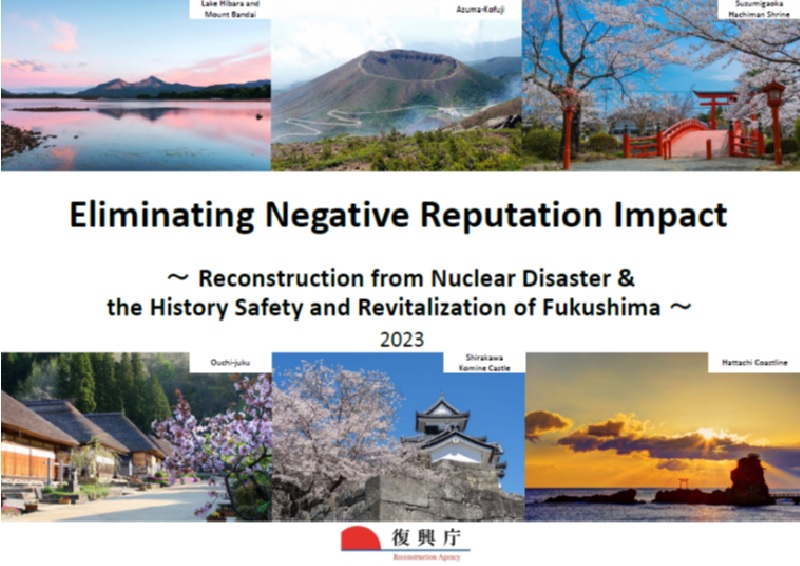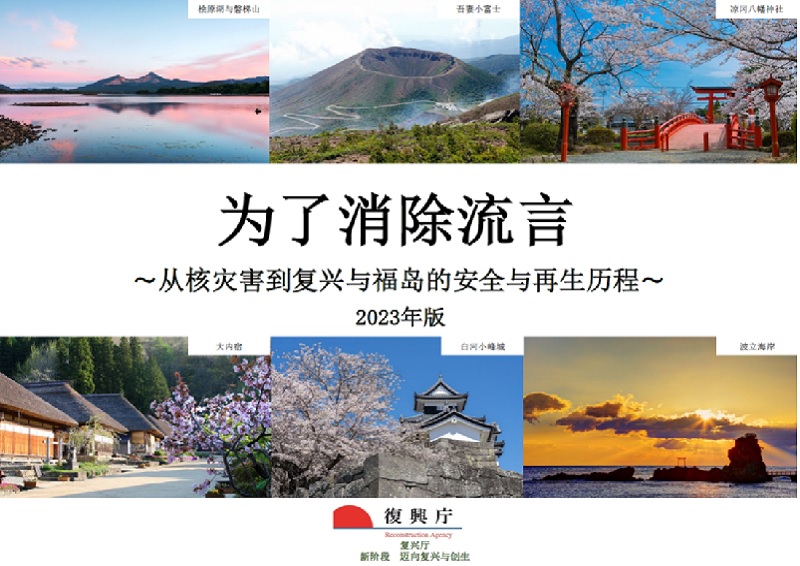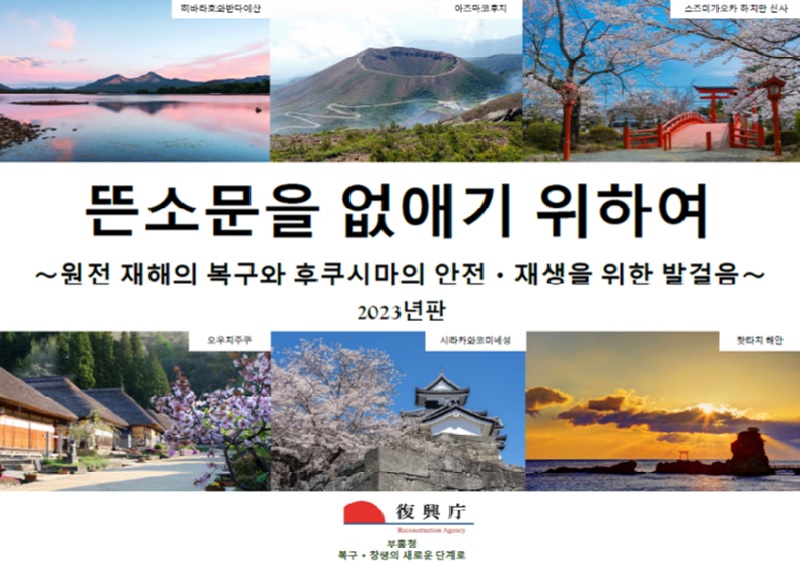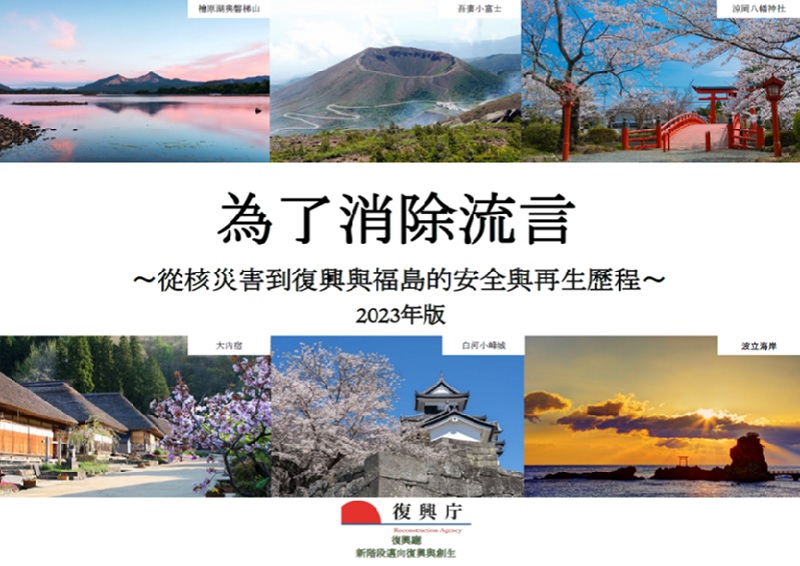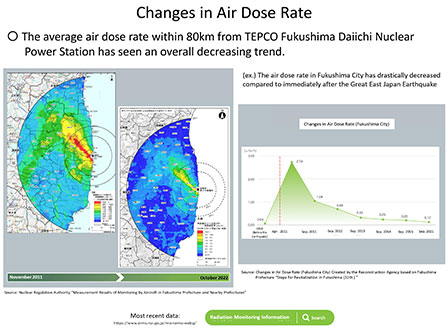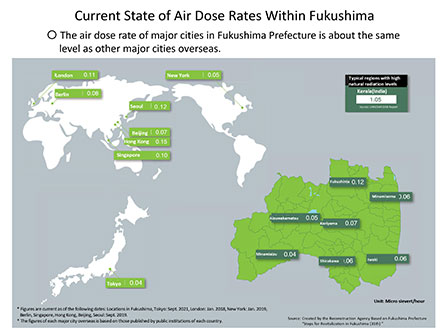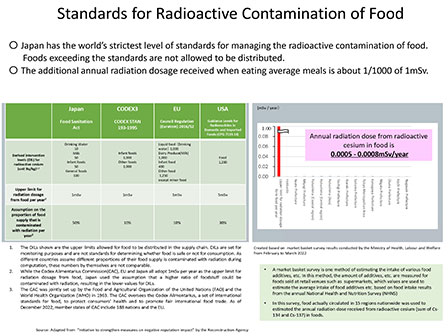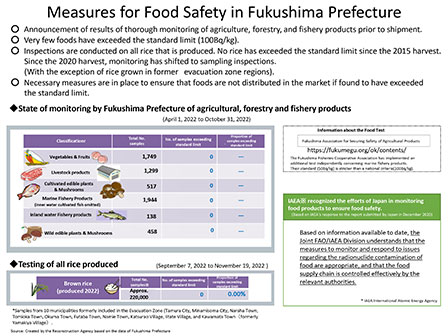Efforts toward Reconstruction of Tohoku
ALPS Treated Water Marine Monitoring Information|Ministry of the Environment
After the Great East Japan Earthquake on March 11, 2011, the Japanese Government promptly formulated budgets, modified laws and orders, and established the “Reconstruction Agency” in 2012. The timeframe for reconstruction was set as 10 years, of which the first 5 years (2011-2015) was designated as the “Intensive Reconstruction Period,” with 25 trillion JPY (approx. $250 billion) allocated for reconstruction efforts. The second 5-year period (2016~2020) was designated as the “Reconstruction and Revitalization Period,” with 6.5 trillion JPY (approx. $65 billion) allocated.
Most of the infrastructure in the areas affected by the earthquake has been reconstructed. Reconstruction of housing is steadily moving forward and is also mostly completed. The number of evacuees decreased from a maximum of over 470,000 to approximately 30,000. The Reconstruction Agency also works on reviving industry and people’s livelihoods as well as providing health and living support. (Please refer to “Progress to Date” for further information.)
Compared to Miyagi and Iwate, the reconstruction of Fukushima will take longer. However, there are also signs of positive developments. As the level of radiation decreased both naturally and due to decontamination efforts, evacuation orders which were issued after the accident at the TEPCO Fukushima Daiichi Nuclear Power Station were lifted for Tamura City (April, 2014), Naraha Town (September, 2015), Kawauchi Village (June, 2016), and Kawamata Town (March, 2017), and partially lifted for Katsurao Village (June 2016), Minamisoma City (July 2016), Iitate Village (March, 2017), Namie Town (March, 2017),Tomioka Town (April 2017), Okuma Town (April 2019) and Futaba Town (March 2020). (Please refer to the Ministry of Economy, Trade and Industry (METI) website page for Assistance of Residents Affected by the Nuclear Incidents.)
The Government is making every effort to provide accurate information about the current situation in the Tohoku region, including the eventual risks of radiation, so that people can safely enjoy local agricultural products and visit the region. The Government of Japan ensures food safety by conducting thorough inspections for radioactive materials based on the most stringent reference values in the world, and only those products that have passed the inspections reach domestic and international markets. For example, all rice produced in Fukushima Prefecture was tested for radioactive contamination until 2020, with 100% of rice produced after 2015 containing no radioactive materials exceeding standard levels. Additionally, no marine products from Fukushima Prefecture that are distributed on the market contain radioactive materials exceeding standard levels. (Please refer to the Ministry of Agriculture, Forestry and Fisheries (MAFF) and Fisheries Agency website for the latest food safety information.)


